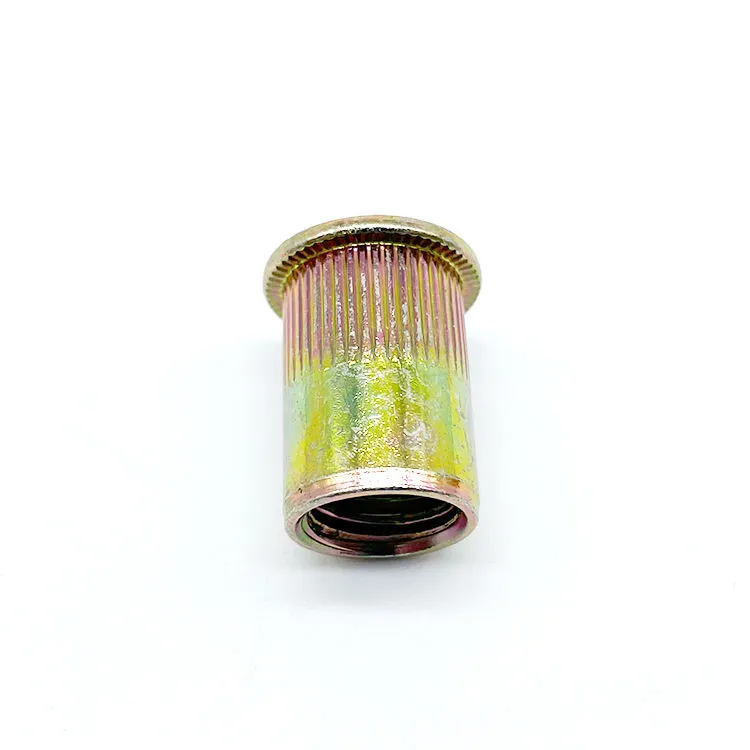

m5 threaded rod
Oct . 06, 2024 22:02 Back to list
m5 threaded rod
Understanding M5 Threaded Rod A Comprehensive Guide
When it comes to fastening solutions, the M5 threaded rod stands out as an essential component in a variety of applications ranging from construction to DIY projects. This article will delve into the characteristics, applications, and advantages of the M5 threaded rod, providing a thorough understanding of its significance in various industries.
What is an M5 Threaded Rod?
The designation M5 refers to the metric size of the threaded rod, specifically indicating that the nominal diameter is 5 millimeters. Threaded rods are long, cylindrical rods that have a continuous helical ridge or thread running along their length. These rods can be made from various materials including steel, stainless steel, and plastic, offering different levels of strength, corrosion resistance, and flexibility. The M5 threaded rod is typically used in scenarios where strength and reliability are paramount, and precise fastening is required.
Characteristics of M5 Threaded Rods
1. Material The choice of material directly impacts the threaded rod's durability and suitability for various environments. Common materials include - Steel Strong but may require coating to prevent corrosion. - Stainless Steel Offers excellent corrosion resistance, making it suitable for outdoor and marine applications. - Plastic Lightweight and resistant to chemicals, but generally less strong than metal counterparts.
2. Length M5 threaded rods come in various lengths, allowing for customization based on the specific requirements of the project. They can be easily cut to the desired length, making them versatile for different applications.
3. Thread Pitch The M5 designation typically comes with a standard thread pitch of 0.8 mm, ensuring compatibility with appropriate nuts and washers for secure fastening.
4. Strength The tensile strength of M5 threaded rods can vary based on the material and treatment process. High-strength steel versions can withstand significant loads, making them ideal for heavy-duty applications.
Applications of M5 Threaded Rods
M5 threaded rods are utilized in numerous applications, including
m5 threaded rod

- Construction These rods are commonly used in structural applications such as anchoring components to concrete or other materials. They provide a robust solution for securing beams, columns, and other load-bearing elements.
- Manufacturing In mechanical assemblies, M5 threaded rods are often employed to connect different pieces of equipment. Their precision threading ensures a strong hold that can withstand vibrations and dynamic loads.
- Automotive Industry M5 rods are frequently used in automotive assembly lines for securing various components, due to their reliability and strength.
- DIY Projects Hobbyists and DIY enthusiasts often use M5 threaded rods for custom projects such as furniture construction, tool racks, or robotic assemblies. Their adaptability makes them a popular choice in the maker community.
Advantages of Using M5 Threaded Rods
1. Versatility M5 threaded rods can be used in a myriad of applications across different industries, making them a go-to solution for both professionals and amateurs alike.
2. Strength The load-bearing capacity of M5 threaded rods makes them suitable for applications where safety and durability are crucial.
3. Cost-Effective Given their wide range of uses and materials, M5 threaded rods can often provide a cost-effective fastening solution compared to other types of fasteners.
4. Customizability The ability to cut and customize the length of the rod allows for tailored solutions that can meet diverse requirements, enhancing their usability in various settings.
Conclusion
In summary, the M5 threaded rod is a vital component within the realm of fastening solutions. Its robustness, versatility, and ability to adapt to various applications make it an invaluable tool in industries ranging from construction to automotive and beyond. Whether you're a professional engineer or a DIY enthusiast, understanding the properties and applications of M5 threaded rods can enhance your projects and ensure successful outcomes. By leveraging the advantages of these rods, you can achieve secure, effective, and long-lasting results in your fastening tasks.
Latest news
-
High-Strength Hot Dip Galvanized Bolts - Hebei Longze | Corrosion Resistance, Customization
NewsJul.30,2025
-
Hot Dip Galvanized Bolts-Hebei Longze|Corrosion Resistance&High Strength
NewsJul.30,2025
-
High-Strength Hot-Dip Galvanized Bolts-Hebei Longze|Corrosion Resistance&High Strength
NewsJul.30,2025
-
Hot Dip Galvanized Bolts-Hebei Longze|Corrosion Resistance&High Strength
NewsJul.30,2025
-
Hot Dip Galvanized Bolts - Hebei Longze | Corrosion Resistance, High Strength
NewsJul.30,2025
-
High-Strength Hot Dip Galvanized Bolts-Hebei Longze|Corrosion Resistance, Grade 8.8
NewsJul.30,2025

